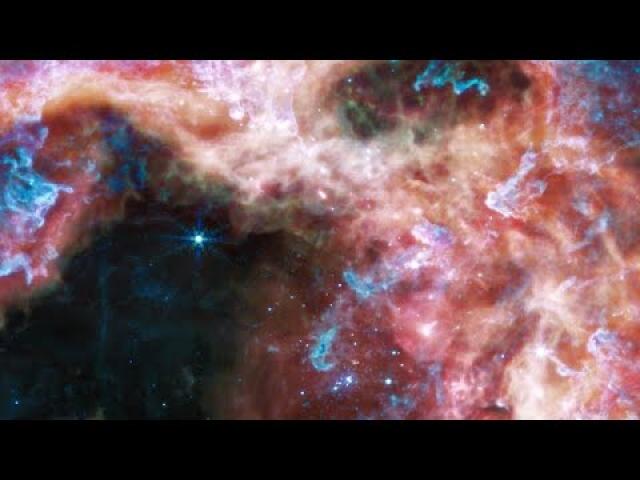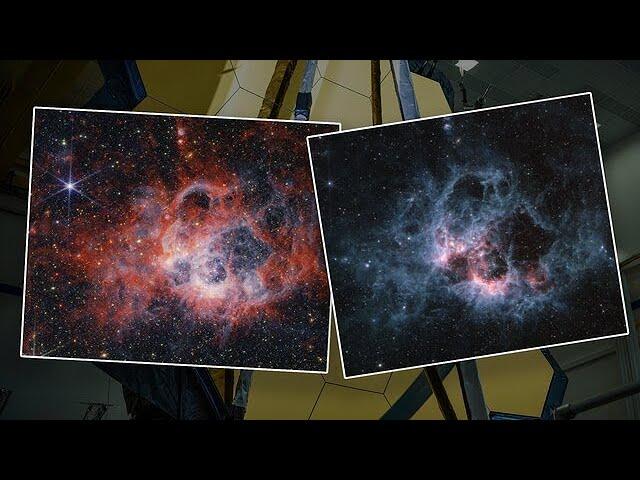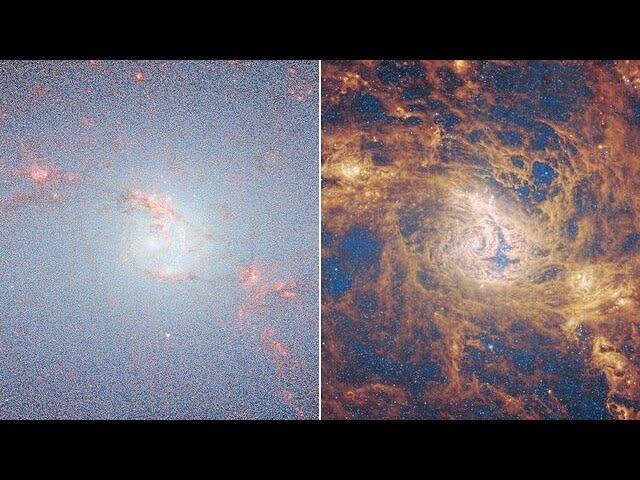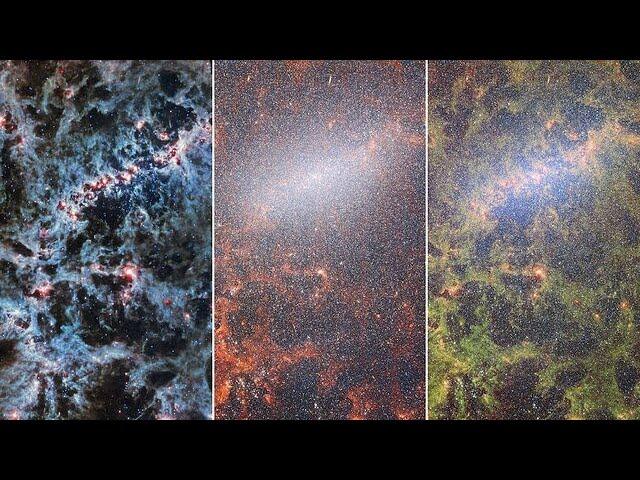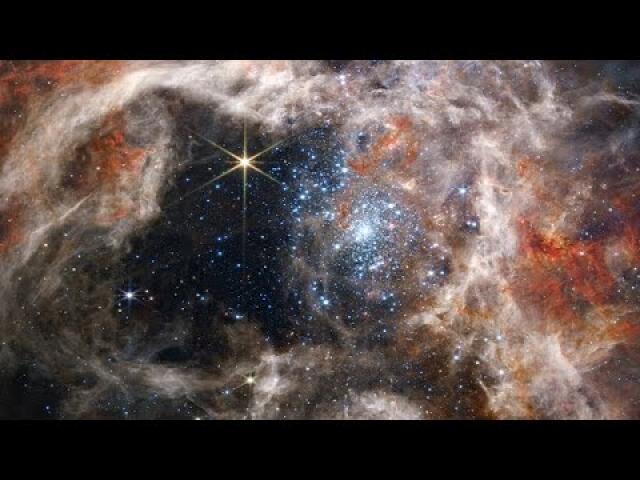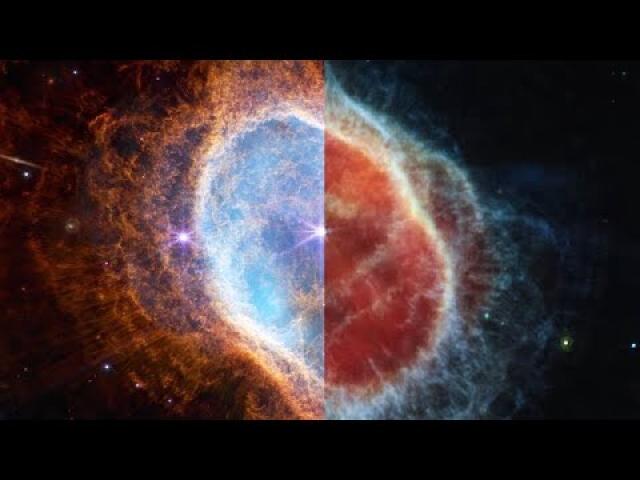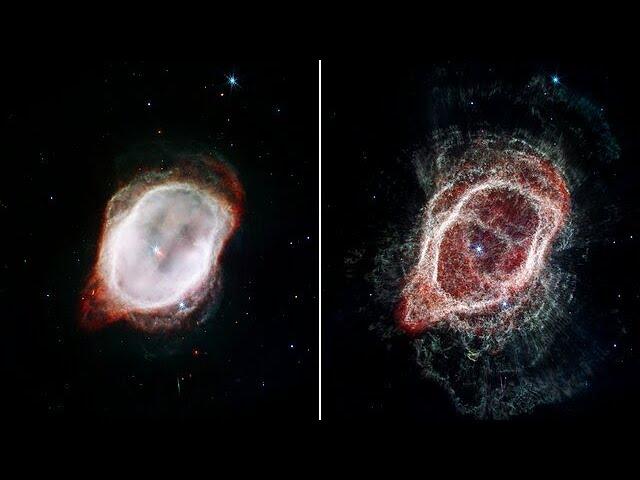Two Views of the Tarantula Nebula (NIRCam and MIRI images)
Description
A side-by-side display of the same region of the Tarantula Nebula brings out the distinctions between Webb’s near-infrared (closer to visible red, left) and mid-infrared (further from visible red, right) images. Each portion of the electromagnetic spectrum reveals and conceals different features, making data in different wavelengths valuable to astronomers for understanding the physics taking place.
The image captured by Webb’s Near-Infrared Camera (NIRCam, left) features bright, hot features, like the sparkling cluster of massive young stars, and the bright star to their upper left, featuring Webb’s distinctive diffraction spikes. Young, emerging stars shine blue, while scattered red points indicate stars that are still enshrouded in dust. Structure in the nebula, carved by the stellar winds of the massive young stars, is intricately detailed.
In the view from Webb’s Mid-Infrared Instrument (MIRI), the hot young stars fade, and cooler gas takes the spotlight. Much of the nebula takes on a ghostly appearance in the mid-infrared, because these longer wavelengths of light are able to penetrate the dust clouds and reach Webb. Previously hidden bubbles and dust-embedded stars emerge. A particularly prominent, spherically shaped bubble – being blown out by a newborn star – appears in the MIRI image just to the right of the now-darkened central star cluster.
More information and download options: http://esawebb.org/videos/weic2212c/
Credit:
NASA, ESA, CSA, and STScI, N. Bartmann
Music: Stellardrone – Twilight

